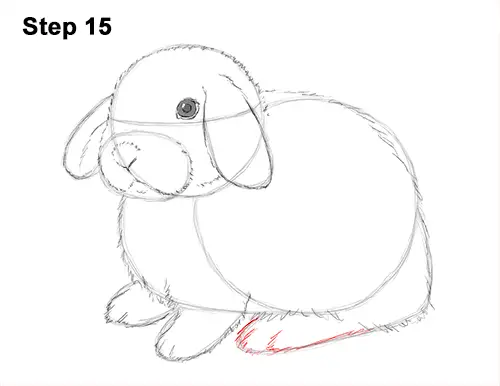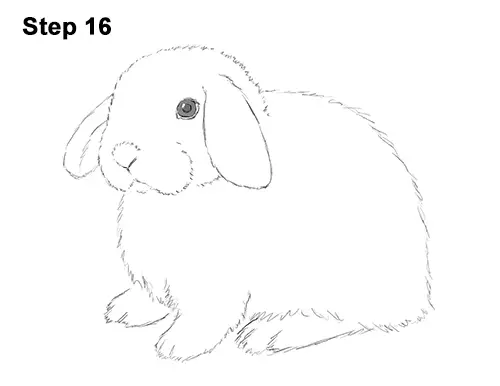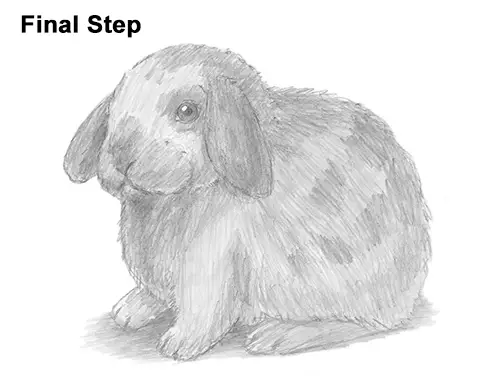
Step 15: Use the curved line under the bunny's body as a guide to draw the hind foot. Don't forget to add the toes at the tip!

Step 16 (optional): For a cleaner look, erase as much as you can of the initial guide lines. Don't worry about erasing all of the guides. It's okay to leave some behind.

Final Step (optional): Add some shading to your Holland Lop bunny's drawing to give it more dimension and volume. Pick the direction of the light source when shading so that the shadows are consistent with it. As you add the shadows, separate each stroke a bit and make them longer to create a furry texture. You can actually stop here if you would like your bunny rabbit to be white.
Add a cast shadow underneath. This helps ground the bunny so it doesn't appear to be floating.
You can add even more value throughout your drawing for extra detail. Holland Lop bunnies have a variety of coat patterns, so you can shade yours however you'd like. You can use a darker value on the muzzle and ears and also create spots or patches. Vary the pressure on your pencil to get different degrees of tonal value. Don't worry about shading too smoothly. The rough value gives the Holland Lop's coat a furry texture. Add the value by using strokes that go in the general direction of the bunny's fur. Shading can be time-consuming, so be patient and take breaks. It's always a good idea to use reference for a more accurate drawing. If you have a pet bunny, try to duplicate its pattern on your drawing. Remember to pause the video to draw at your own pace.
Thanks for watching! Subscribe to the How2DrawAnimals YouTube Channel for a new tutorial every Tuesday.
To learn how to draw popular cartoon characters, visit EasyDrawingTutorials.com.







